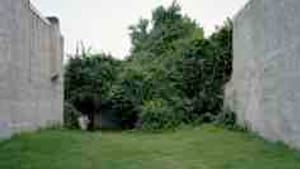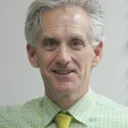Stay in the Loop
BSR publishes on a weekly schedule, with an email newsletter every Wednesday and Thursday morning. There’s no paywall, and subscribing is always free.
Worlds we never noticed
Arresting photography at Print Center and Gallery 339

Our accelerating world of fleeting images and TMI— too much information—is disquieting. Photography can offer a refuge from over-stimulation, mindfully arresting our sensory experience. Pausing in front of a photograph, we can experience the richness of a still image of humanity, seen or manipulated through an artist's eye.
Philadelphia's two premier venues for photography, Gallery 339 and The Print Center, currently are presenting excellent shows of artists whose work detains us by revealing what we may otherwise have missed.
Daniel Traub, a young artist based in Philadelphia and New York, has already gained an international reputation. Since 1999 his photographs and videos have documented major transformations in Chinese society, as he explored the edges where urban expansion and rural areas meet. He first hit the streets of North Philadelphia when, years ago, he assisted his mother, the artist Lily Yeh, in her work as the founding director of the Village of Arts and Humanities. The urban landscape of North and West Philadelphia is the subject of his current show at The Print Center.
Vacant lots, untold stories
"Lots," Traub's series of large-format color photographs, directs our eye to the vacant, rectangular spaces between buildings, often boarded up or showing minimal signs of domesticity. The extant houses on each side of the lots frame our view of spaces inhabited now by varying degrees of vegetation. They range from the clean-cut grass of a suburban-looking yard to near re-forestation and jungle foliage, each quiet and powerful image a documentation of abandonment.
Traub's art helps us discover spaces that our drive-by minds would have missed. The multiplicity of these lacunae that rarely appear in middle- or upper-class neighborhoods fuels our imagination; we can only guess at the stories of fires, disrepair, evictions and abandonment that resulted in these domiciliary amputations.
The banal innocence of nature filling these voids masks the understories of urban decay that mark the lives of too many people in this "other America" that borders our own neighborhoods. Traub's focus on negative, urban spaces that powerfully conjure past history and forgotten lives shares a force similar to the photography series by Haverford College professor William Earle Williams, who documented the empty, unmarked landscapes of Civil War battle sites where tens of thousands of African-American soldiers gave their lives.
Far from curious tourists
With Traub's show, The Print Center also presents a group show, "Stalking the Wild Asparagus," a name copped from the popular 1962 foraging guide by Euell Gibbons. Six photographers document families pursuing alternative utopian lives in rural or wilderness America. All of them possess an anthropologist's fascination with the margins of our society, far from the view of the media or curious tourists.
These include Edenic images of utopian naturists living off the land (by Justine Kurland, Lucas Foglia and Adrian Chesser and Timothy White Eagle), as well as images of strange homes off the grid by Keilu Anderson-Staley, and even stranger artifacts of hunters and gatherers by Taj Forer. The show suggests that so-called '60s counter-culturalism may not have been a passing social phenomenon but rather a cultural continuum borne out of our DNA or our ability to survive— or transcend— our civilization's constraints.
Imperfectly remembered time
Gallery 339 presents two artists with radically different photographic styles, both of whom portray people close to their lives. The more transfixing and complex are Rita Bernstein's images of friends and family in a series entitled "Ghost of Summer."
Using a technique of hand-applied silver emulsion on Japanese Gampi paper, Bernstein lays down her soft focus black-and-white images, imparting an air of ambiguity and imperfectly remembered time. Her technique and choice of paper mesh with her intent to invite imperfection and impermanency into carefully wrought images; they suggest a found-image quality that disassociates itself from the fine craft of their creation.
Bernstein's figures in Understudy or Façade mysteriously merge into their surroundings. In other, more sharply focused images, like Bathers, Swimmer and Joanna, Age 16, Bernstein combines formal play with shadings of light and contrast.
Ghost of Summer evokes a deconstructed Monet; we see a bicyclist on a bright summer's outing where the shadowing has toned down to the almost nondescript, the ebbing brilliance of mid-summer.
Although her work is reminiscent of the pictorialism of early modern photography, Bernstein eschews the latter's romantic sentimentalism and estheticizing imperatives to present compelling contemporary work that embraces mystery and ambiguity. This may be Bernstein's most mature work since she took up photography in the 1980s after her first career as a public interest lawyer.
Teenage tensions
Also at Gallery 339, the French-born photographer Martine Fougeron presents "After Prom," the last in a five-year series about her two sons called the "Tête-a-Tête Project." These large-scale color photographs capture the informal, carefree moments of a group of teenagers on the cusp of adulthood who are at ease in each other's company. Her individual and group portraits hint at conflicts beneath surface frivolities. These hidden tensions form the theme for this body of work.
Philadelphia's two premier venues for photography, Gallery 339 and The Print Center, currently are presenting excellent shows of artists whose work detains us by revealing what we may otherwise have missed.
Daniel Traub, a young artist based in Philadelphia and New York, has already gained an international reputation. Since 1999 his photographs and videos have documented major transformations in Chinese society, as he explored the edges where urban expansion and rural areas meet. He first hit the streets of North Philadelphia when, years ago, he assisted his mother, the artist Lily Yeh, in her work as the founding director of the Village of Arts and Humanities. The urban landscape of North and West Philadelphia is the subject of his current show at The Print Center.
Vacant lots, untold stories
"Lots," Traub's series of large-format color photographs, directs our eye to the vacant, rectangular spaces between buildings, often boarded up or showing minimal signs of domesticity. The extant houses on each side of the lots frame our view of spaces inhabited now by varying degrees of vegetation. They range from the clean-cut grass of a suburban-looking yard to near re-forestation and jungle foliage, each quiet and powerful image a documentation of abandonment.
Traub's art helps us discover spaces that our drive-by minds would have missed. The multiplicity of these lacunae that rarely appear in middle- or upper-class neighborhoods fuels our imagination; we can only guess at the stories of fires, disrepair, evictions and abandonment that resulted in these domiciliary amputations.
The banal innocence of nature filling these voids masks the understories of urban decay that mark the lives of too many people in this "other America" that borders our own neighborhoods. Traub's focus on negative, urban spaces that powerfully conjure past history and forgotten lives shares a force similar to the photography series by Haverford College professor William Earle Williams, who documented the empty, unmarked landscapes of Civil War battle sites where tens of thousands of African-American soldiers gave their lives.
Far from curious tourists
With Traub's show, The Print Center also presents a group show, "Stalking the Wild Asparagus," a name copped from the popular 1962 foraging guide by Euell Gibbons. Six photographers document families pursuing alternative utopian lives in rural or wilderness America. All of them possess an anthropologist's fascination with the margins of our society, far from the view of the media or curious tourists.
These include Edenic images of utopian naturists living off the land (by Justine Kurland, Lucas Foglia and Adrian Chesser and Timothy White Eagle), as well as images of strange homes off the grid by Keilu Anderson-Staley, and even stranger artifacts of hunters and gatherers by Taj Forer. The show suggests that so-called '60s counter-culturalism may not have been a passing social phenomenon but rather a cultural continuum borne out of our DNA or our ability to survive— or transcend— our civilization's constraints.
Imperfectly remembered time
Gallery 339 presents two artists with radically different photographic styles, both of whom portray people close to their lives. The more transfixing and complex are Rita Bernstein's images of friends and family in a series entitled "Ghost of Summer."
Using a technique of hand-applied silver emulsion on Japanese Gampi paper, Bernstein lays down her soft focus black-and-white images, imparting an air of ambiguity and imperfectly remembered time. Her technique and choice of paper mesh with her intent to invite imperfection and impermanency into carefully wrought images; they suggest a found-image quality that disassociates itself from the fine craft of their creation.
Bernstein's figures in Understudy or Façade mysteriously merge into their surroundings. In other, more sharply focused images, like Bathers, Swimmer and Joanna, Age 16, Bernstein combines formal play with shadings of light and contrast.
Ghost of Summer evokes a deconstructed Monet; we see a bicyclist on a bright summer's outing where the shadowing has toned down to the almost nondescript, the ebbing brilliance of mid-summer.
Although her work is reminiscent of the pictorialism of early modern photography, Bernstein eschews the latter's romantic sentimentalism and estheticizing imperatives to present compelling contemporary work that embraces mystery and ambiguity. This may be Bernstein's most mature work since she took up photography in the 1980s after her first career as a public interest lawyer.
Teenage tensions
Also at Gallery 339, the French-born photographer Martine Fougeron presents "After Prom," the last in a five-year series about her two sons called the "Tête-a-Tête Project." These large-scale color photographs capture the informal, carefree moments of a group of teenagers on the cusp of adulthood who are at ease in each other's company. Her individual and group portraits hint at conflicts beneath surface frivolities. These hidden tensions form the theme for this body of work.
What, When, Where
Daniel Traub: “Lotsâ€; and Group Show: “Stalking the Wild Asparagus.†Through March 5, 2011 at The Print Center, 1614 Latimer St. (215) 735-6090 or www.printcenter.org.
Rita Bernstein: “Ghost of Summerâ€; and Martine Fougeron: “After Prom.†Through January 29, 2011 at Gallery 339, 339 South 21st St. (between Spruce and Pine). (215) 731-1530 or www.Gallery339.com.
Sign up for our newsletter
All of the week's new articles, all in one place. Sign up for the free weekly BSR newsletters, and don't miss a conversation.
 Jonathan M. Stein
Jonathan M. Stein